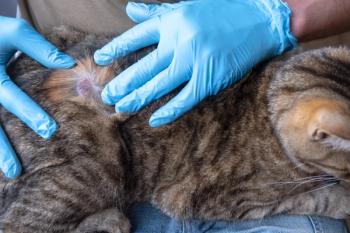
Care standards more sophisticated, but still unequal across nation
National Report - Standards of care are on the rise across the nation. Yet a blurry line marks the difference between negligence and proper care because acceptable standards often are based on region, rather than documented guidelines.
NATIONAL REPORT — Standards of care are on the rise across the nation. Yet a blurry line marks the difference between negligence and proper care because acceptable standards often are based on region, rather than documented guidelines.
Increased medical, technological and pharmaceutical advancements, coupled with heightened client awareness — due much in part to the Internet — are the main forces pushing care standards uphill.
"I think standards are continually evolving. As veterinarians and the profession gain new knowledge, there is an expectation that the knowledge becomes widely disseminated and widely known," says John Albers, DVM and American Animal Hospital Association (AAHA) executive director.
But with no hard-copy regulations in existence to guide practitioners, care standards remain constantly in flux based on regional influences, such as the availability of specialists.
"I think that the proximity of specialists always affects the standards of care and what you ought to be doing in your practice, versus what you should be sending to someone with special training," says Jon Klingborg, DVM and former California Veterinary Medical Association (CVMA) president.
In any case, rural and other areas that lack specialists are seeing care standards rise. Ninety-two percent of respondents to a DVM Newsmagazine survey said they feel veterinary care standards are becoming more sophisticated in their area. Client demand is the main reason, contend 65 percent of those polled.
"From a scientific perspective, we know more about animals than ever before. That obligates us to review and revise standards to continue to maintain and improve conditions of care," says Janice Swanson, PhD and director of animal welfare at Michigan State University's College of Veterinary Medicine. "But societal expectations also mold standards of animal care."
While veterinarians recognize the delivery of care is improving, how they interpret non-tangible expectations coming from consumers and state boards remains a challenge.
Standards defined
"A standard of care is defined as the fundamental amount of care that one should provide. But it is not a clean definition. It's based on a region," Klingborg says.
"My first practice was in an extremely remote part of California. And I actually had the opportunity to do a lot of different procedures that I normally wouldn't have done if I were working in a big-city practice. But within certain regions there may be access to certain tools or techniques, and then veterinarians are duty-bound to use them," he says.
And because standards are usually set locally, what is accepted in one community may not be in another, Albers says.
"For example, in a very rural area where veterinarians are only practicing companion-animal medicine on a part-time basis and practicing food-animal medicine full time, most likely the companion-animal standards would be less than in an area densely populated with these veterinarians," he says. Determining negligent behavior piggybacks on this philosophy, as negligence in one area may be considered acceptable practice in another.
Regardless of standard levels, veterinarians are obligated to do the best they can for their clients, who trust them with their animals, Swanson says.
"As the public's most identified steward of animal health and care, veterinarians often will be the first authoritative contact for most citizens. This carries a responsibility to be informed about standards of care, development of those standards and how they affect the quality of life for an animal," she says.
This is of growing importance to DVMs, as 50 percent of the veterinarians surveyed by DVM Newsmagazine report the majority of their clients had greater expectations about the veterinary care delivered at their practices over the past two years.
Lagging leadership
But who, if anyone, should be responsible for developing and enforcing care standards remains subjective. There is no one-stop shop for veterinarians to clarify what standards are the norm for their area, Albers says, which can lead to conflicting animal care.
"A veterinarian could query their state board and see what the standard is. I don't think there is anywhere to go for written standards," he says.
"Standards of care are living documents," says Swanson, who argues that if one entity takes the lead in monitoring standards, they will not be created in the best interests of the veterinarian or the animal.
"I don't believe that you have a single entity solely responsible for this. There is a social component to advancing animal care, and we need to include expertise from the social sciences," she says, citing ethicists as an example of a sector that should play a role in creating standards.
"Standards must be carefully constructed so the end effect is a demonstrated improvement in the quality of life and care of the animals. That takes more than one entity to accomplish," Swanson contends. "The negative would be to create standards of care that...emerge from a single-minded agenda. Under this condition, standards may...become entrenched in the status quo, unable to motivate change when change is needed."
Shared scope
Veterinary medicine continues on, even though lacking clear care standards, and the profession is not alone in this trend of rising expectations that fluctuate based on geography. "Even on the human side, we are seeing significant differences in the surgeries performed," says Klingborg, who cites the hysterectomy as an example of a human procedure looked at very differently based on the doctor's region.
"This is not an issue that is unique to the veterinary profession," he says. "And the bottom line is every veterinarian is duty-bound to perform to the best of his or her ability with the intention of helping the pet. Ultimately that is the standard of care we should be shooting for."
Newsletter
From exam room tips to practice management insights, get trusted veterinary news delivered straight to your inbox—subscribe to dvm360.




